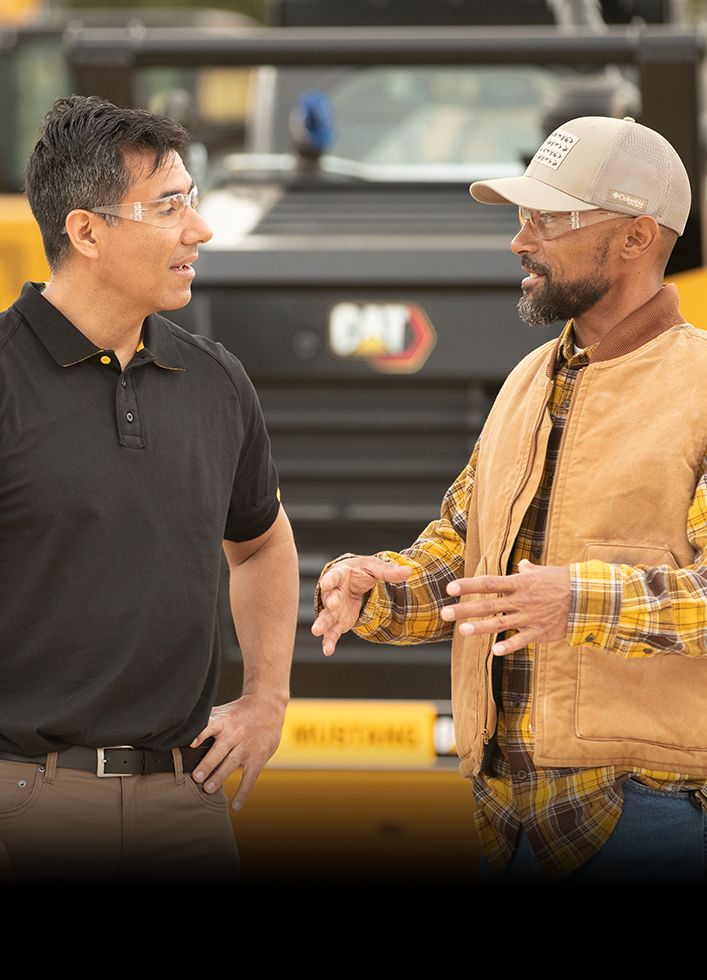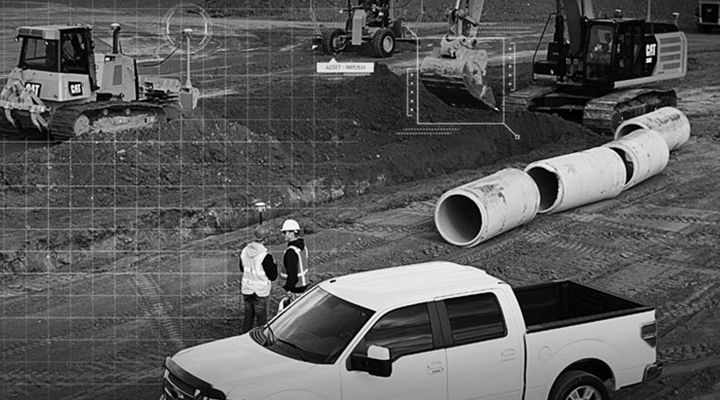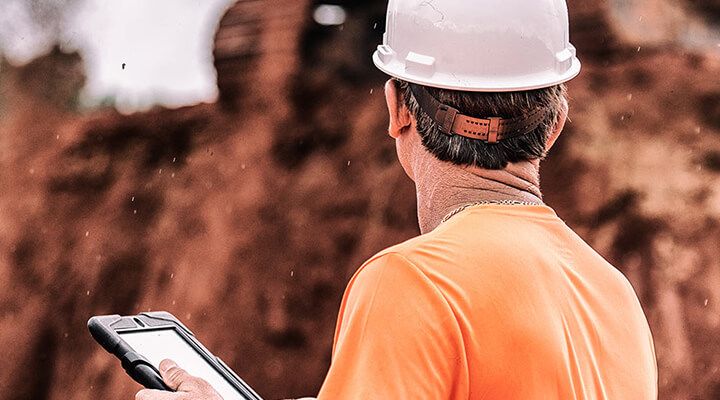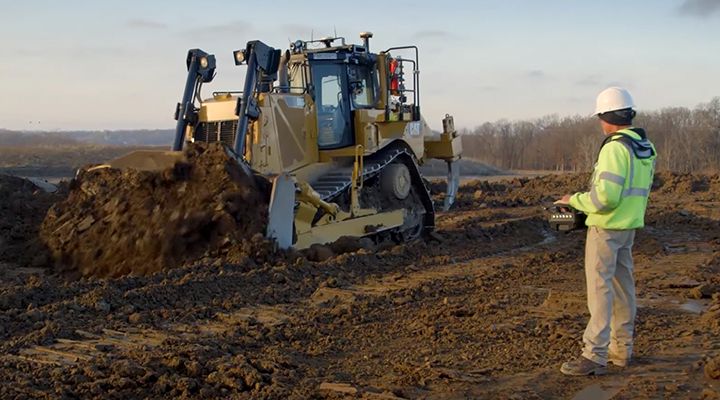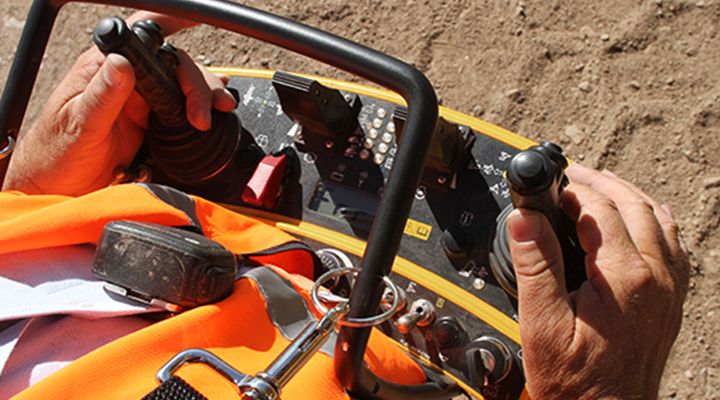

Sign In
Welcome! Sign In to personalize your Cat.com experience
If you already have an existing account with another Cat App, you can use the same account to sign in here
Register Now
One Account. All of Cat.
Your Caterpillar account is the single account you use to log in to select services and applications we offer. Shop for parts and machines online, manage your fleet, go mobile, and more.
Account Information
Site Settings
Security
Using 2D Grading Systems for Residential Construction
Cat® Ambassador Ryan Goodfellow has found that using 2D grading systems for residential construction projects has been a huge step in making his team more efficient.
CAITLIN MADDOCK-BAHR | Social Media & Digital Strategy Manager
It’s the age-old story for construction businesses: not enough hours in the day and not enough manpower to do all of the work that you want to. That’s where new technologies come in. We sat down with Cat® Ambassador Ryan Goodfellow to learn how using 2D grading systems for residential construction projects has helped him and his team use their time more efficiently and get more done each day.
What is a 2D Grading System?
A 2D grading system is a technology that works with your machine using on-board processors and sensors to give you feedback in real-time on the distance to grade so you can reach grade faster. The manual way to check grade is by physically doing it yourself, getting in and out of the cab or having another person on the ground to help you. 2D grading systems eliminate that, putting the information you need to know in your machine and allowing you to grade faster.
How Do You Use 2D Grading Systems?
Ryan and his team at Rock Structures have found a lot of value in using 2D grading systems on residential construction projects, like smaller homes where the lot doesn’t have many elevation changes.
“2D grading systems are pretty intuitive,” Ryan said. “It’s easy to follow – there’s a big monitor that allows you to see what you’ve got going on. You can pull everything up and see where you’re at with grading elevations.”
What’s the Difference Between 2D and 3D Grading Systems?
Ryan also uses 3D grading systems on some of his larger job sites where there are more elevation changes or there isn’t necessarily a lot of room to work to put stakes down. 3D grading systems involve making a model of your job site, which involves more prep work up front than a 2D grading system.
“2D grading systems allow you to start digging to grade right away, which is a little harder to do with 3D since you have to make that model,” Ryan noted.
If you are just getting started in the world of grading technology, he recommends starting with a 2D system to get familiar with how they work and help your productivity.
“Once you get familiar with 2D and see how it can benefit you, then you start thinking about 3D and the additional possibilities it opens up,” he said. “The addition of 3D grade really helps you expand to different types of larger projects.”

How Do You Train Your Operators on 2D Grading Systems?
Since the world of construction is pretty fast-paced, Ryan finds hands-on training to be the best approach when it comes to getting his operators familiar with the 2D grading systems.
“I spend an hour or two with them covering how 2D grade works and then I’ll let my operators loose to let them get a feel for the system by practicing,” Ryan commented. “In a matter of an hour, you can have 2D grading systems pretty well figured out.”
How Do 2D Grading Systems Help Your Business?
The biggest difference 2D grading systems has made to Ryan’s business is that it allows him and his team to get more done each day.
“I can take someone who’s never used the system before, spend an hour with them on how it works, and once they have it figured out, I can go work on a different job across the street and leave the first guy working by himself,” he said.
The efficiencies it has created for him and his team have been the biggest leg up for his business on his competition. Having these technologies in place allows Ryan to shift his operators to work on different projects, helping him do more with his current team.
“If I have a good laborer, I’m not going to let them go because of a new technology,” Ryan noted. “I’m going to utilize them somewhere else. There’s every reason to figure out how to make them more productive in a different application.” Being able to more efficiently allocate labor resources across different jobs not only helps boost his business’ productivity – it also helps make them more profitable.
“We’ve more than seen our return on investment with 2D grading systems, just because they’ve allowed us to do a little bit more than our competition can do.”
How Do You Get Started with 2D Grading Systems?
Ryan recommends that your first step in getting set up with a 2D grading system is to go to your local Cat dealer and talk to them about what your goals are by adding the system to your fleet. From there, a Cat representative can help you set up a demo so you can try out the technology on your job site. In a lot of cases, your Cat rep will also be on hand during the demo to answer any questions for you, as they were when Ryan and his team did their own on-site demo.
A 2D grading system can be very helpful to your construction business, and Ryan firmly believes that once you try it, you won’t want to go back.
“Once people take the time to learn it, they wonder why they hadn’t done it before!” said Ryan.


CAITLIN MADDOCK-BAHR
Social Media & Digital Strategy Manager
Caitlin Maddock-Bahr exercises her storytelling expertise as a social media & digital strategy manager. In this role, she not only helps Caterpillar connect with their audience, but helps customers connect with the brand.
RELATED ARTICLES
You’re here to get ideas to grow your business. Read on for machine insights and expert tips and tricks to get more out of every job.
-
Productivity - More Efficiency. Better Results.
Cat® Technologies gives you the accuracy, consistency and productivity you want.
Learn More -
Should You Take A Harder Look at Telematics?
Technology has been helping the construction industry get more productive for a long time.
Learn More -
Automation & Autonomy: What's the Difference?
These words get used interchangeably, creating confusion. To improve consistency, we've defined these terms.
Learn More -
Machine Control & Automation Can Add To Your Bottom Line
Technologies that enhance machine performance can add to the bottom line.
Learn More
Connect with Us
In person or online, we're here to help you find the answers you need. Reach out to your local Cat dealer for advice close to home. Sign up for our newsletter to hear from industry experts. Or keep exploring this site for additional information.

